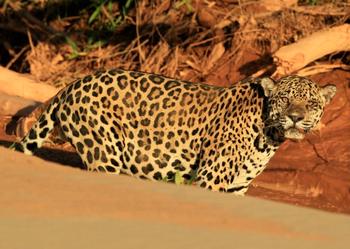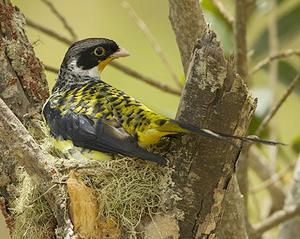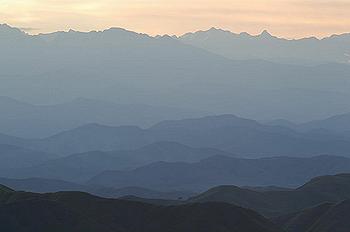波利維亞馬迪迪國家公園目前已鑑定出超過1088種鳥類、90種蝙蝠、300種魚類及12,000種植物;美洲豹及豹貓潛行於林間,角雕翱翔於天際。
在IUCN世界保育大會(WCC)9月13日公布的調查報告中顯示,這個在波利維亞西北部遙遠的國家公園,可能是世界上生物多樣性最豐富的地方。

由於園區海拔範圍涵蓋亞馬遜熱帶森林到白雪覆蓋的安地斯山脈頂,馬迪迪國家公園因而擁有如此豐富的物種多樣性。
於大會中,由波利維亞國家公園管理處(SERNAP)及總部在美國紐約的國際野生物保育協會(WCS)共同發表馬迪迪國家公園的已知物種名單。
這份報告彙整了超過50名分屬WCS、波利維亞動物名錄蒐集(Bolivian Fauna Collection)、波利維亞國立標本館、亞馬遜保育協會、玻利維亞鳥類保育組織「愛爾摩尼亞協會(Asociacion Armonia)」、美國密蘇里植物園等單位的科學家的研究成果,部分科學家已在這個公園投注超過15年的心血。
基於波利維亞國家公園管理處的要求,這些科學家在2008年底參加了一個研討會並分享他們關於馬迪迪國家公園的研究成果、物種名錄及討論未來的保育需求。
最新發表的物種名單呈現了至少200種哺乳動物,從體重300公斤草食的南美貘到僅重4克食蟲的三色盤翼蝠(Spix’s disk-winged bat)。
馬迪迪國家公園有1868種脊椎動物,包括1088種鳥類(體型分佈大如猛禽小至蜂鳥)、佔全世界鳥類物種數的11%。全世界境內有超過此鳥種數的國家只有11個,美國全境僅有不到900種鳥類。

上述都還只是現有文獻的資料。該公園總生物多樣性的三分之二尚未被科學家正式紀錄或發現。這指出在氣候變遷改變全球山脈的生物多樣性前,應在此區進行更多的研究。
WCS馬迪迪地景計畫主持人Robert Wallace博士表示:「由於馬迪迪海拔範圍跨越6000米,在南美洲沒有其他的保護區可以達到如此高的多樣性。參與此區研究的科學家都覺得能在此區工作是種恩典,且很高興能幫助波利維亞國家公園管理處在國內及國際推廣此區的重要性。」
馬迪迪國家公園是波利維亞的旅遊熱點之一,且是馬迪迪-坦博帕塔地景(Madidi-Tambopata Landscape)保護區的一部份。馬迪迪-坦博帕塔地景是世界上面積最大的複合體之一。
來自波利維亞的Oscar Loayza,和WCS合作進行大馬迪迪-坦博帕塔地景保育計畫,由於創新的保護區經營管理,於本屆IUCN世界保育大會獲頒坎頓米勒獎(Kenton Miller Award)。
Loayza因強化原住民參與管理馬迪迪-坦博帕塔地景而受到國際評審青睞。該區目前因大型建設計畫如道路、水壩、石油探勘及小尺度礦業而面臨挑戰。

Loayza促進玻利維亞公園管理處、保育人士及原住民結盟,以玻利維亞的官方政策為基礎,來鞏固原住民傳統領域並闡述由總統莫拉萊斯賦予的相關權利。莫拉萊斯是玻利維亞第一位原住民出身的總統。
在馬迪迪國家公園仍存在許多未知,尤其是海拔1000-3000米間的熱帶山區或雲霧林。
國際野生物保育協會的總裁Cristian Samper博士表示:「這顯示我們對熱帶安地斯的雲霧林所知甚微;除了它在多樣性及野生動物的重要性外,由流域管理及美學的觀點上,它都是極端重要的。」
Samper認為,「國際野生物保育協會以在此地協助玻利維亞政府為榮。」
國際野生物保育協會進一步表示,該組織在馬迪迪-坦博帕塔地景的工作受到了摩爾夫婦基金會、麥克阿瑟基金會、美國藍月基金會、Beneficia Foundation、迪士尼全球保育基金及其他單位的贊助。
Jaguar and ocelots stalk the forest and harpy eagles soar high above Bolivia’s Madidi National Park, where more than 1,088 bird species, 90 species of bats, some 300 types of fish, and 12,000 plant varieties have been identified.
This remote park in northwest Bolivia may be the most biologically diverse place on Earth, according to a comprehensive survey released Thursday at the IUCN World Conservation Congress, an international gathering of conservationists meeting on Jeju Island.
The great diversity of species live in Madidi National Park because it spans altitudes and habitats that range from lowland tropical forests of the Amazon to snow-capped peaks of the High Andes.
The list of known species in Madidi was published by the Bolivian Park Service, SERNAP, and the New York-based Wildlife Conservation Society.
The report compiles the work of more than 50 scientists from WCS, Bolivian Fauna Collection, Bolivian National Herbarium, Amazon Conservation Association, Armonia, Missouri Botanical Garden and others, some of whom have worked in the park for 15 years.
At SERNAP’s request, the scientists gathered at a workshop in late 2008 to share their knowledge about Madidi National Park, how many species Madidi contains and its conservation needs for the future.
The newly published list shows that there are more than 200 species of mammals in the park ranging from the 300-kilogram (661-pound) lowland tapir, an Amazonian herbivore, to the tiny insectivorous Spix’s disk-winged bat that weighs just four grams (.14 ounces).
The park contains 1,868 species of vertebrates, including 1,088 species of birds that range in size from eagles to hummingbirds – 11 percent of the world’s bird species. Only 11 countries have a greater number of bird species; the entire United States contains fewer than 900 bird species.
And those are just the species documented to date. Two-thirds of the park’s total biodiversity has yet to be formally registered or observed by scientists, pointing to the need for more research in the region before climate change alters even more the biodiversity of the world’s mountains.
“With Madidi’s almost 6,000-meter (19,685 feet) altitudinal range, no other protected area captures the diversity of South American habitats that pushes these numbers through the ceiling. All the scientists who contributed to this compendium feel privileged to work in Madidi, and we are all very happy to help SERNAP promote the national and international conservation importance of the area,” said WCS’s Madidi Landscape Program Director Dr. Robert Wallace.
Madidi National Park is one of the top tourist attractions in Bolivia and part of a larger protected region known as the Madidi-Tambopata Landscape, one of the largest such complexes in the world.
Oscar Loayza of Bolivia, who works with the WCS on the Greater Madidi-Tambopata Landscape Conservation Program was presented with the Kenton Miller Award for Innovation in Protected Areas Management this week at the IUCN’s World Conservation Congress.
Loayza was chosen by the international jury for his development of initiatives that strengthened indigenous participation in the management of the Madidi-Tambopata Landscape. The entire area is facing the challenges of large infrastructure projects, roads, dams, oil exploration and small scale mining.
Loayza promoted alliances among the Bolivian park service, conservationists and indigenous peoples, building upon Bolivian government policies to consolidate indigenous territorial and representation rights brought in by President Ivo Morales, the first Bolivian leader of indigenous heritage.
Still much is unknown about Madidi National Park, particularly in the tropical montane or cloud forests between 1,000 and 3,000 meters (3,280 and 9,842 feet).
“This important compendium emphasizes just how poorly known the cloud forests of the Tropical Andes really are,” said Dr. Cristian Samper, president and CEO of the Wildlife Conservation Society. “Apart from their biodiversity and wildlife importance, they are critical from a watershed management perspective and are aesthetically beautiful.”
“The Wildlife Conservation Society is proud to be assisting the Bolivian government in the conservation of these magnificent places,” Samper said.
WCS says the organization’s work in the Madidi-Tambopata Landscape has been made possible by the Gordon and Betty Moore Foundation, The John D. and Catherine T. MacArthur Foundation, the blue moon fund, the Beneficia Foundation and the Disney Worldwide Conservation Fund, among other supporters.
全文及圖片詳見:ENS





